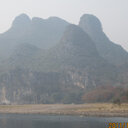Rossicaside B protects against carbon tetrachloride-induced hepatotoxicity in mice.
Avainsanat
Abstrakti
The protective effect of rossicaside B, the major phenylpropanoid glycoside from Boschniakia rossica, on CCl(4)-induced hepatotoxicity and the mechanisms underlying its protective effect were investigated. The mice were administered orally with rossicaside B (100 or 200 mg/kg of body weight) 48, 24 and 1 hr before CCl(4) (0.5 ml/kg of body weight) administration. The CCl(4) challenge caused a marked increase in the levels of serum aspartate aminotransferase, alanine aminotransferase and of tumour necrosis factor-alpha, and propagated lipid peroxidation with a concomitant reduction in reduced glutathione (GSH) and antioxidative enzyme activities in the liver. The administration of rossicaside B to CCl(4)-treated mice not only decreased the serum toxicity marker enzymes and TNF-alpha but also reduced hepatic oxidative stress, as demonstrated by decreased lipid hydroperoxide and thiobarbituric acid-reactive substance concentrations, combined with elevated GSH content and antioxidative enzyme activities in the liver tissues. Furthermore, the contents of hepatic nitrite, inducible nitric oxide synthase (iNOS), cyclooxygenase-2 (COX-2) and haem oxygenase-1 (HO-1) were elevated after CCl(4) treatment while the cytochrome P450 2E1 (CYP2E1)-specific monooxygenase activity was suppressed. Rossicaside B treatment inhibited the formation of liver nitrite, reduced the over-expression of iNOS and COX-2 proteins, but increased the CYP2E1 function compared with the CCl(4)-treated mice. However, the protein expression of HO-1 was further elevated by rossicaside B treatment. The results demonstrate that rossicaside B provides a protective action on CCl(4)-induced acute hepatic injury, which may be related to its antioxidative activity, suppressed inflammatory responses, induced HO-1 expression and improved CYP2E1 function in the liver.



